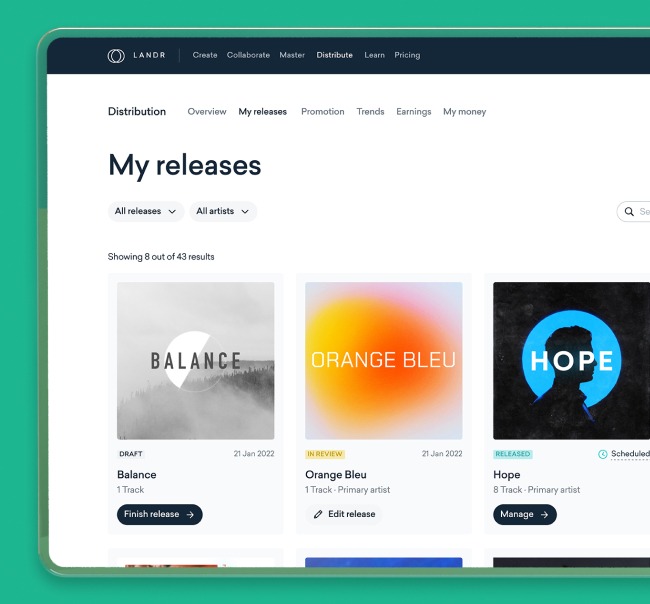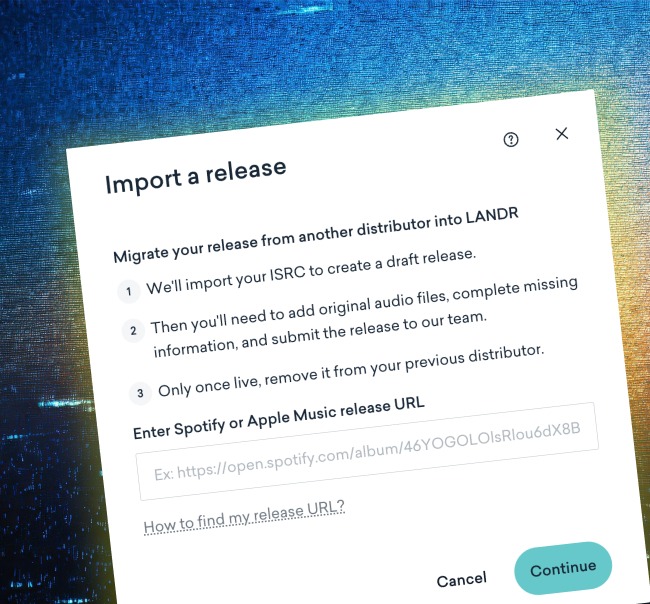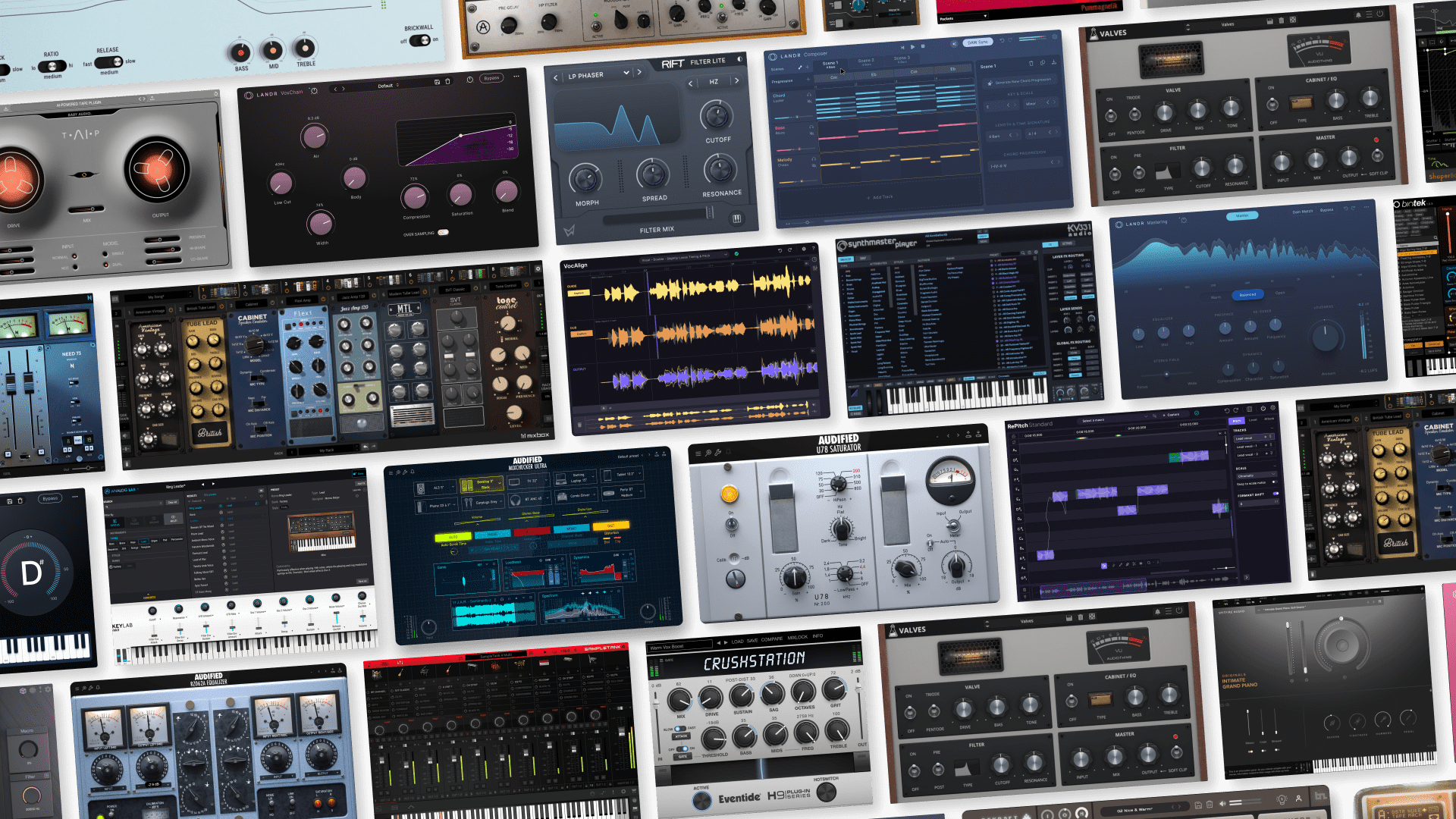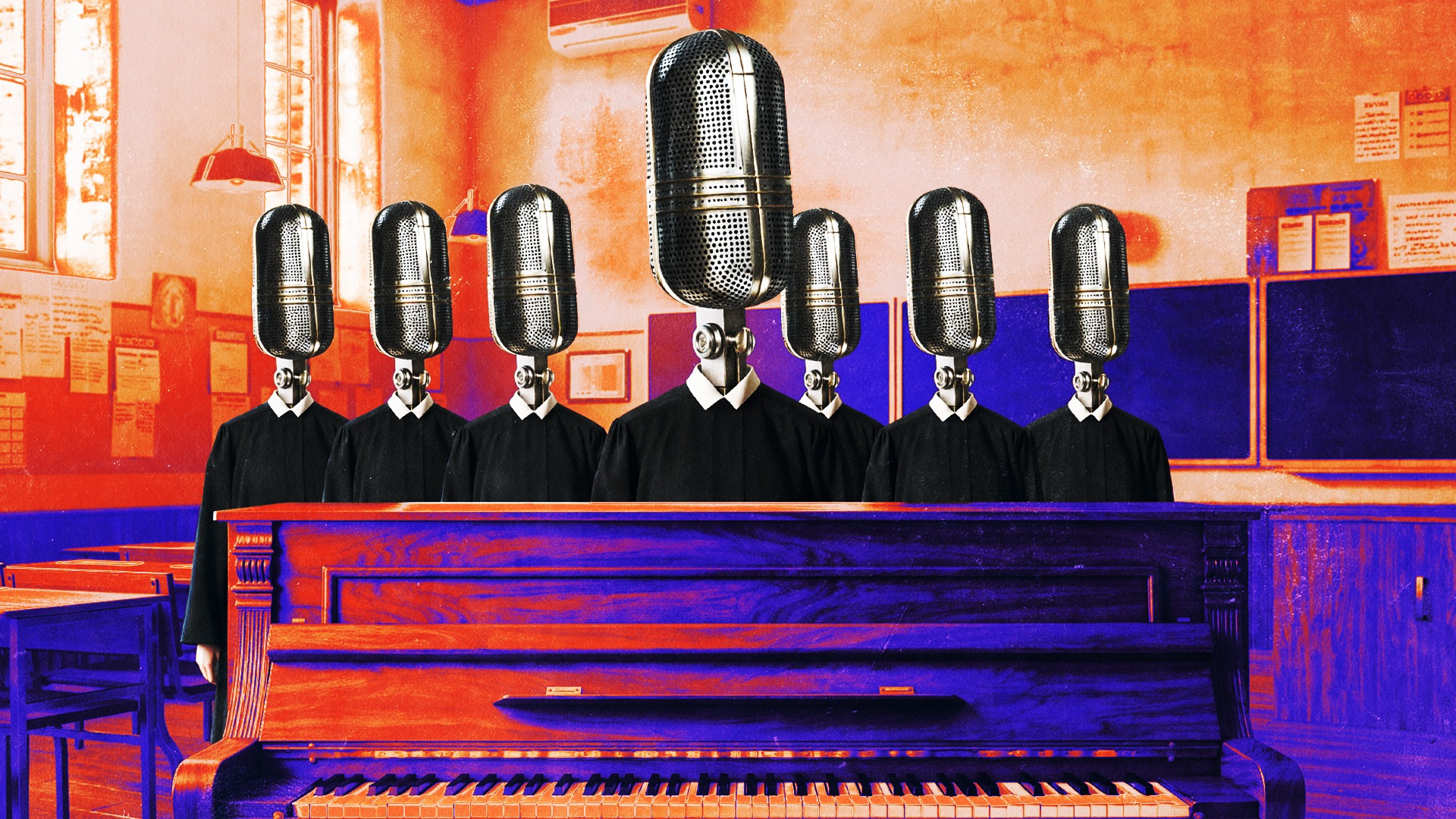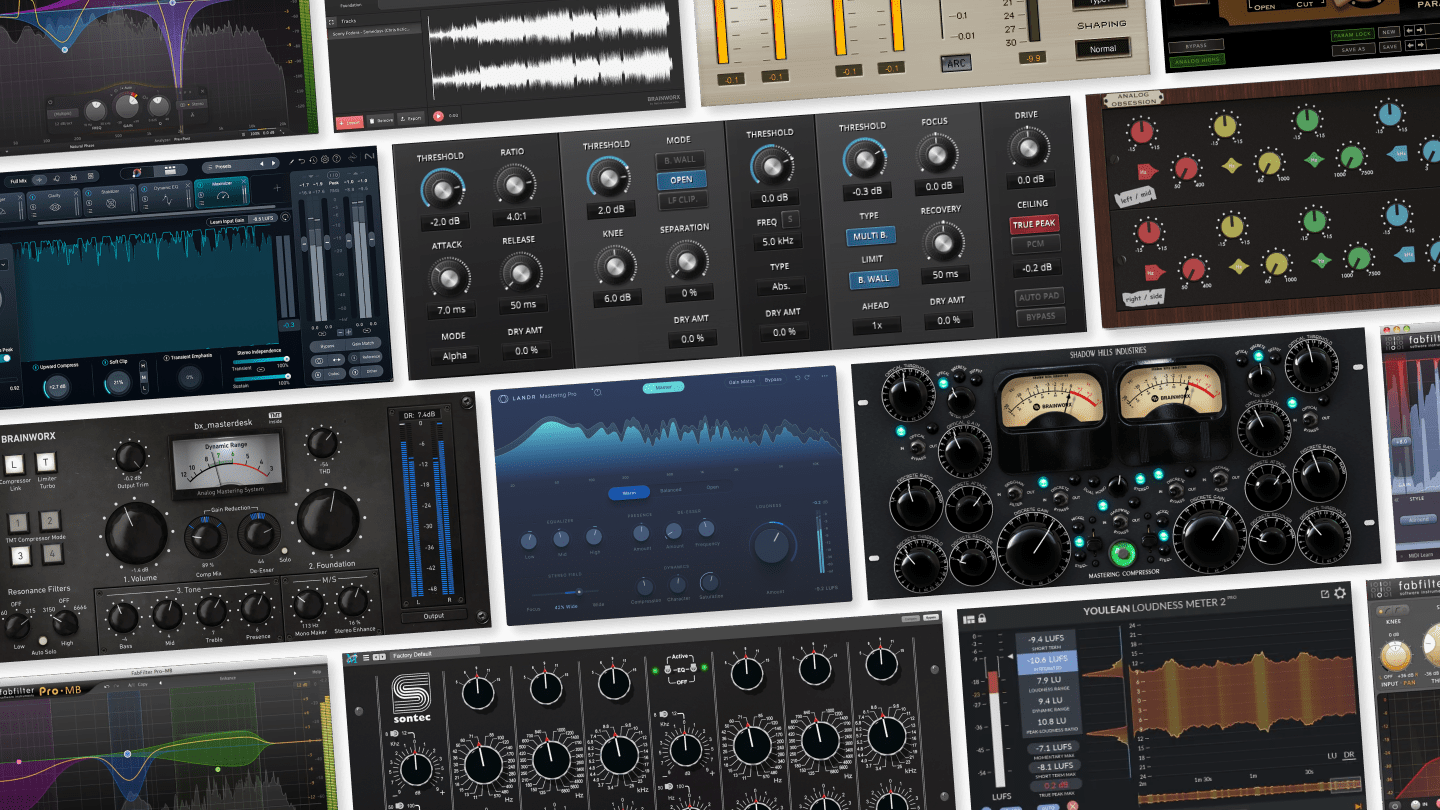
Is My Music in a Bot Playlist? How to Check Playlists for Bots and What to Do About It
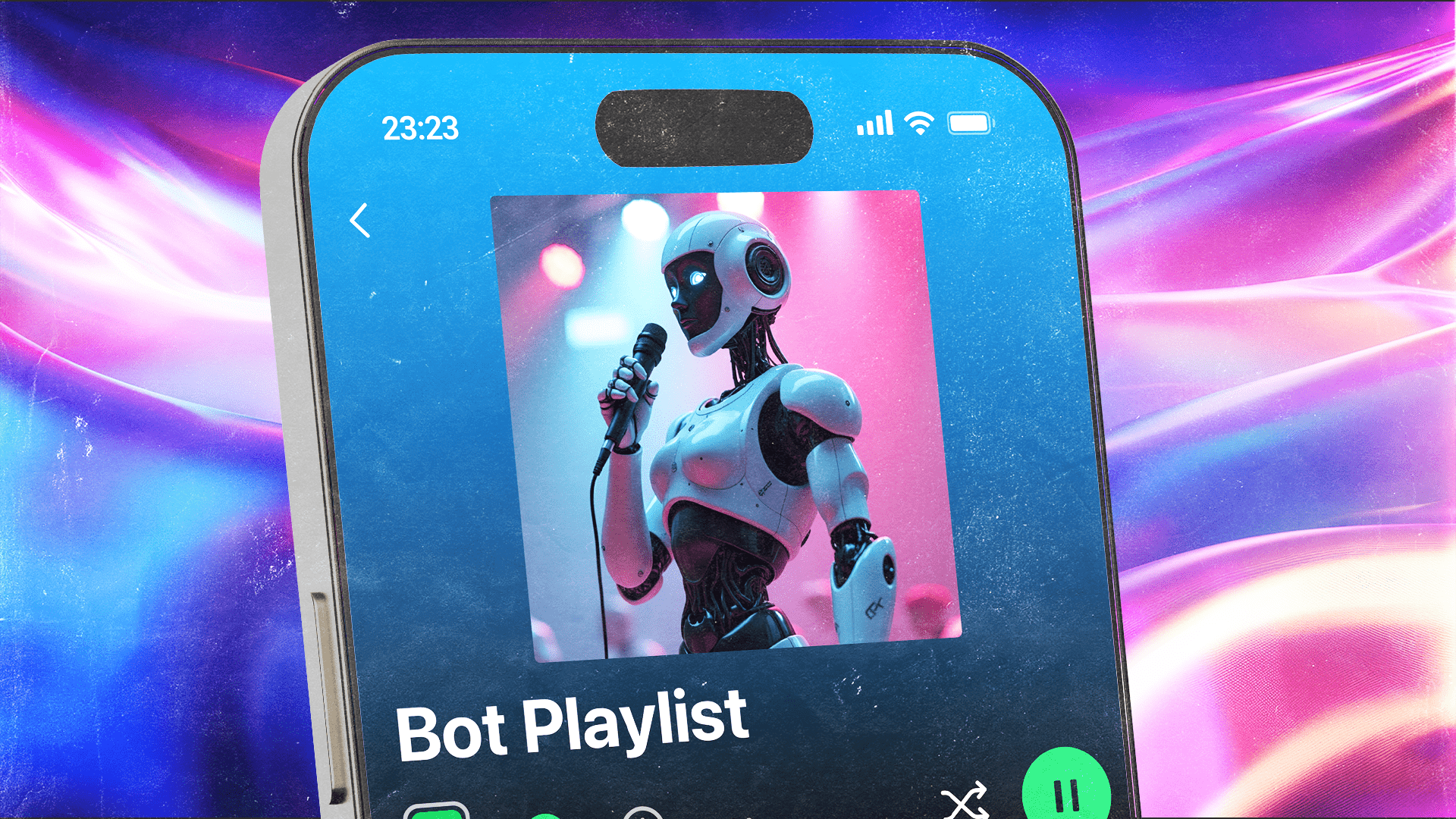
If you’ve ever released music on Spotify or any other streaming platform, you may know the excitement that comes with getting on a popular playlist.
Considering that playlists are one of the most common ways listeners discover new music on streaming platforms, securing placements on well-trafficked playlists is a crucial part of any music promotion plan.
But not all playlists are created equal. Spotify and Apple Music editorial playlists tend to get a ton of attention, while user-made playlists don’t usually get nearly as many plays or followers.
So if you start getting a lot of plays from a playlist made by a user that you don’t recognize, your concerns about falling into an illicit bot playlist scheme are completely valid.
In this article, we’ll take a look at the characteristics of bot playlists and what you can do if your music gets added to one. We’ll also explore a few options for checking playlists for bot activity.
Let’s dive in!
Table of Contents
What is a bot playlist?
A bot playlist is any playlist on a streaming platform whose users are mostly bots. These bots artificially “listen” to the playlist to fraudulently inflate the streams of the artists on that playlist.
Bot playlists serve two purposes: they fraudulently collect streaming revenue and they scam real artists into paying for fake streams.
Independent user playlists are a common place to find bot activity, but they’ll also manipulate algorithmic playlists like Spotify’s daily mixes to falsely prove their legitimacy.
If a shady service tries to “prove” that its streams are legitimate by saying its streams come from algorithmic playlists made by Spotify or another streaming service, be very cautious.
That said, a non-algorithmic playlist curated by a streaming service itself will never be a bot playlist.
Signs your music might be in a bot playlist
Of course, in the vast majority of cases, user playlists are made by real music lovers who merely wish to share their curatorial tastes with friends, family and their wider community.
So it takes a keen eye to know whether a playlist is real or a playlist with bot activity.
Here are a few signs to watch out for.
The playlist curator is too anonymous and the playlists look odd
Legitimate playlist curators almost always attach their profile to a social media account or website, or they feature clear signals about who they are.
Bot playlists, on the other hand, will be noticeably anonymous and will lack links to any legitimate social media accounts or websites.
If your music is getting streams from a playlist that suspiciously hides the identity of its curator, you should be concerned.
Of course, just because a curator has a social media account doesn’t mean the curator is legitimate.
Plenty of illegitimate playlisters feature a strong social media presence where placement can be requested for a fee.
The key is to be vigilant and critical when visiting any social media site operated by a playlist curator.
The curator’s followers look like fake accounts
Spotify won’t publicly share the followers of a specific playlist, but it does show who is following that playlist’s curator.
If you see your track on a sketchy playlist, check out the curator and see if any legitimate accounts are following it.
If the curator is overwhelmingly followed by accounts with no profile picture, keyboard-mashed user names and minimal activity, that’s a big sign that their playlists are using bots.
The curator’s playlists are constantly disappearing and then re-appearing
This is a sign that the curator’s playlists are getting deleted by Spotify before being re-uploaded by the curator.
Otherwise, it means the curator might be trying to avoid detection by deleting playlists and re-creating them before getting caught.
So if your song keeps getting added, deleted and then added again by a specific, shady-looking curator, your track might be at risk.
The curator has overwhelmingly good or bad reviews
Check the curator elsewhere online and see if anyone’s reviewed their playlists or past work.
There should be a healthy mix of good and bad reviews, since this field of work should produce dissatisfaction in at least a few customers who didn’t get the PR placements they were hoping for.
If a curator has overwhelmingly positive feedback or claims results that are too good to be true, they might be using bots and AI generators to produce fake reviews.
And of course, if there’s a lot of negative feedback and concerns about bot activity in a curator’s reviews, stay away!
The playlist curation doesn’t make sense
Bot playlists will often attempt to hide unknown, obscure music from artists paying for promotion amongst extremely popular top 40 music or other genres that don’t make sense together.
When your music gets on a playlist, be critical. At minimum, there should be a clear effort to put music that makes sense together, instead of a cludged-together collection that doesn’t connect.
You’re randomly getting a huge spike in streams
Spotify claims that about half of all artificial streams are detected before they’re recorded on artist dashboards or as streaming numbers.
But when things slip through the cracks, a bot playlist might cause a spike in streams that you’ll see in your stats.
So, if you see a sudden spike in streams that isn’t related to any marketing activities, press or media attention, your music might be on a bot playlist.
Check to see where the streaming spike is coming from and check against other streaming platforms using your distribution service provider’s stats.
If your track is blowing up in a country where you’ve done no marketing and it’s only blowing up on one streaming service, it’s almost certainly related to a bot playlist.
You’re getting consistent streams with no variation
This bot playlist sign can be a bit harder to detect, but understanding that normal streaming levels are usually inconsistent is key.
If you’re getting virtually the same number of streams every day, that’s a sign that you may be on playlists with bot activity.
Streaming numbers don’t explode 3,000% for no reason like in the example above, but they should vary day-to-day.
If there’s little to no variance in day-to-day streaming numbers, that might be a sign that your songs are on a playlist that’s consistent with regular bot streaming.
You’ve paid for streams from a questionable “PR” company
First of all, don’t pay anyone for streams. Any “PR” company or playlist guaranteeing you streams or playlist placements for a fee is using bots to deliver on their promises.
Yes, PR is a legitimate part of the music industry, but PR firms will never guarantee anything when working with them.
All they can guarantee is that they’ll do their best to present your music to curators, media and press using legitimate connections and promotion channels.
Legitimate PR firms will never say the streams they generate are “bot-free” or “organic”, they simply won’t make any promises like this.
So if you’ve paid someone for streams and are now getting random spikes or unexpected streams from odd-looking playlists, you’ve likely fallen into a bot playlist scam.
How to get your music off a bot playlist
If you reasonably suspect your music is on a bot playlist, your best bet is to ask the playlist maker to remove your song. If no action is taken, report that playlist to the streaming service.
Spotify, for example, offers a quick and easy webpage where artists can raise the alarm if they suspect bot activity.
Another option is to report concerning playlists to the Music Fights Fraud Alliance (MFFA), a group of distributors, labels, and streaming services that have come together to combat fraud on all platforms. You can report playlists using the portal on its website.
You should also review any ongoing promotion campaigns and cancel any campaign that may have contributed to the bot activity.
Lastly, informing your distribution service provider about suspected bot activity is never a bad idea. It could keep you from getting banned or your music from being taken down.
🧠 Hot tip
Online bot playlist checkers
If you’re still not sure whether a playlist has bot activity, there are a few bot-checking tools online.
Bot checking tools can detect bot activity, but they are not 100% accurate and in our testing, they were not always able to detect known bot playlists.
That said, they can still be helpful with identifying problematic playlists, but just because the playlist has a green light does not mean it is 100% bot-free.
1. Spotify Bot Checker
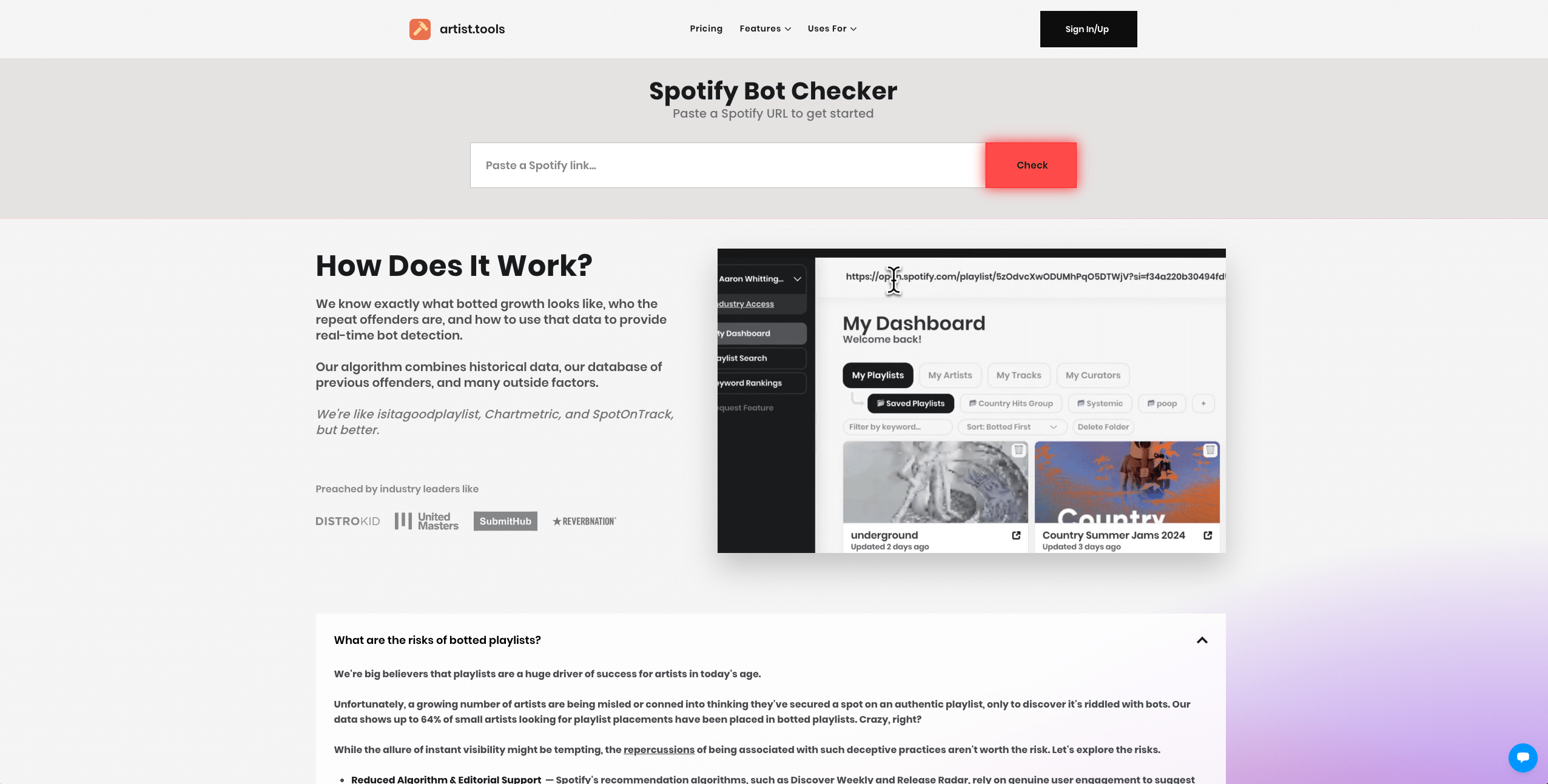
Spotify Bot Checker was able to identify some fraudulent playlists, but shouldn't be taken as 100% accurate.
Spotify Bot Checker from artist.tools is maybe the most advanced bot-checking tool out there.
They claim to have proprietary algorithms that can detect bot activity and, best of all, they offer email templates and contact information that make it easier to get in touch with any suspicious curator.
2. Spotify Playlist Checker
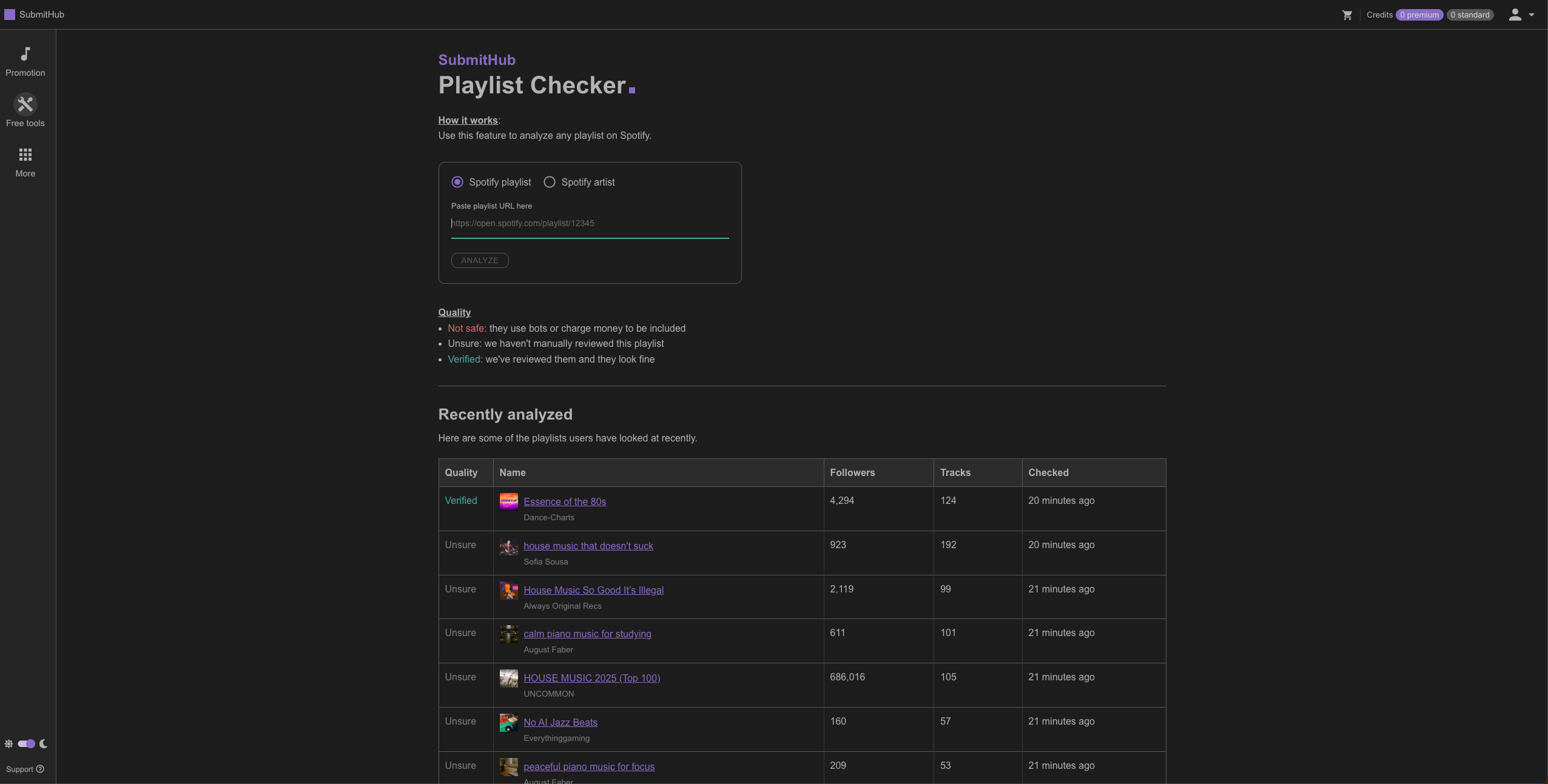
Submithub's Playlist Checker is useful for identifying playlists that have already been tagged as fraudulent, best of all it's free to use.
Spotify Playlist Checker is a tool from Submit that can also detect bot activity.
While it’s not quite as advanced as the Spotify Bot Checker tool from artist.tools, it is a completely free tool that anyone with a free Submithub account can use.
3. Isitagoodplaylist.com
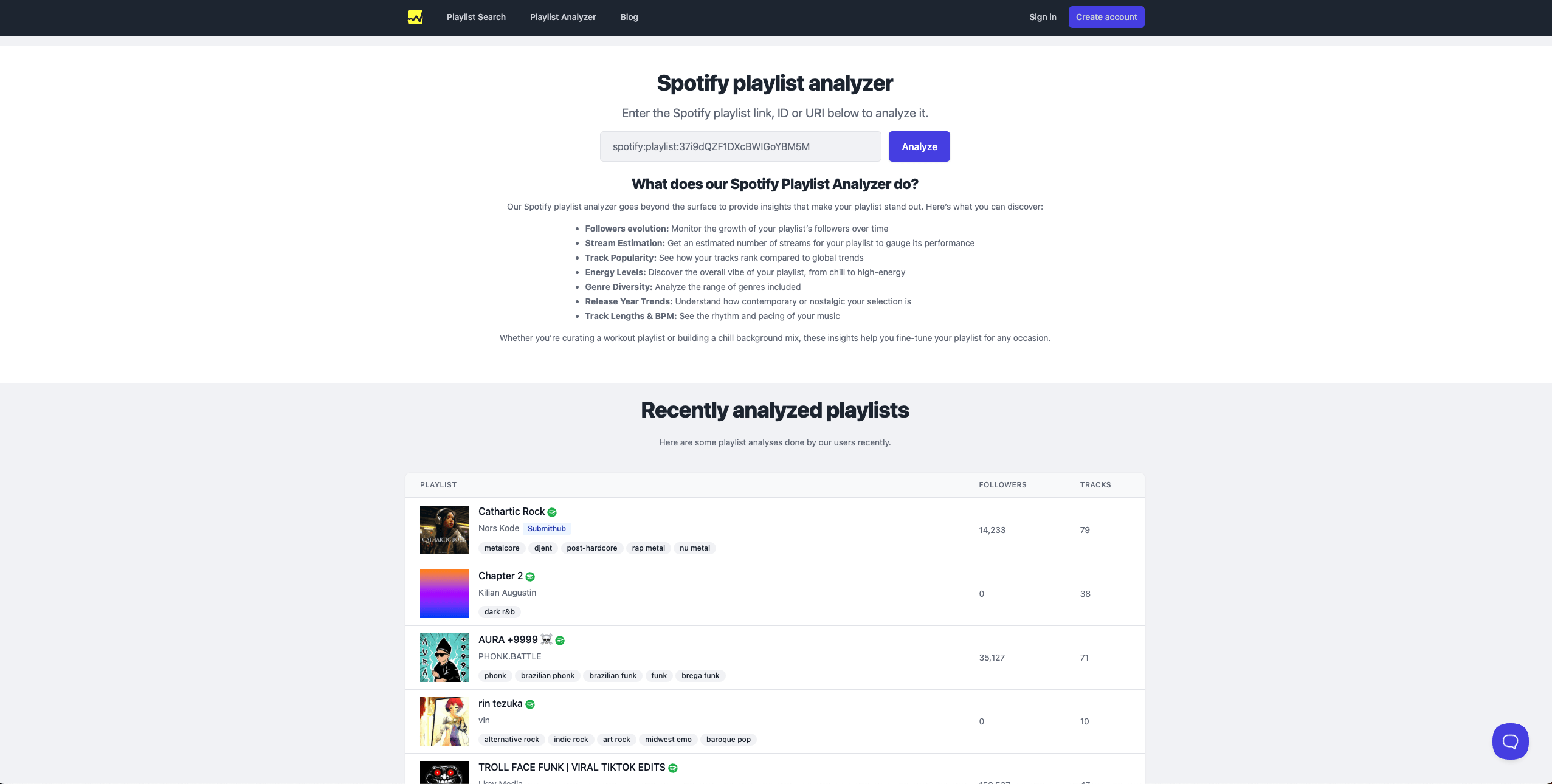
Isitagoodplaylist.com won't tell you if a playlist is fraudulent but it provides a lot of data and can help you diagnose fraudulent activity.
Isitagoodplaylist.com is mainly intended to help you find high-quality playlists that you can submit your music to, but it also offers a few dashboards that can hint at bot activity.
If you’re actively searching for good playlists to submit music to, and are also concerned about bot activity, this could be a good option.
Keep the bots away
While the world of music streaming can be a fantastic way to get your tracks heard, it’s essential to be vigilant against bot playlists and fraudulent activity.
By understanding the signs of a bot playlist and utilizing the available checker tools, you can protect your music and ensure your efforts are recognized by legitimate playlists and listeners.
Stay informed, stay safe, and keep creating!
Gear guides, tips, tutorials, inspiration and more—delivered weekly.
Keep up with the LANDR Blog.


